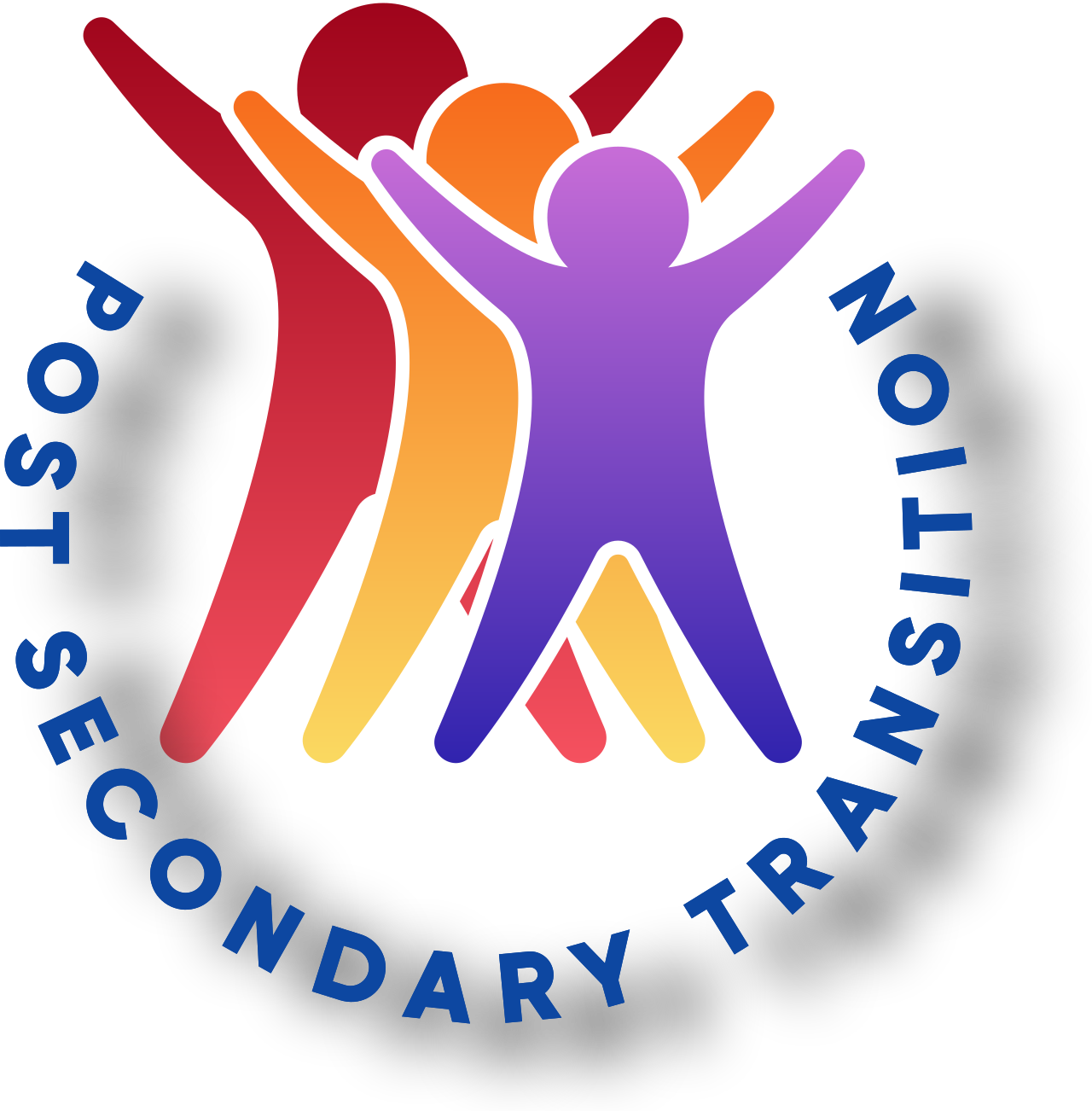
WHERE TO START
First and Foremost, Families should create an “At Home” folder. This folder will be used to collect documentation (copies of IEPs, related assessments including psychological, occupational therapy, physical therapy, etc.), relevant information (agency correspondence, shared resources, community announcements, etc.) and/or ANY information as it relates to next steps for your child.
Remember, each student is unique, and the transition process should be tailored to their individual needs and aspirations. Regular communication with general educators, special educators, counselors, and your child is key to a successful post-secondary transition.
Freshman
-
Encourage your child to develop self-advocacy skills, teaching them to communicate their needs and seek assistance when required. Gradually increase your child's responsibilities and independence in daily tasks to enhance their life skills and self-sufficiency.
-
Work closely with the school's special education team to review & update the IEP (Individualized Education Program) to align with post-secondary goals. Research & understand the accommodations available at the post-secondary level and collaborate with the school to ensure a smooth transition.
-
Students (and their families) should work do gain a clear understanding of their disability, including strengths, challenges, and the types of support they may need.
-
Work with the school to create a foundational transition plan that includes academic goals, career goals, preferred activities, and timelines for preparing your child for life beyond high school.
-
Support savvy social media use (including safety and discretion). Work to foster social skills & relationships to help your student navigate social situations both in and out of school, as these skills are crucial in post-secondary environments.
-
Review and understand the different support services (such as Vocational Rehabilitation agencies) available in your state, in addition to counseling and academic assistance.
-
Help the student explore potential careers through internships, job shadowing, or informational interviews to gain insight into their interests & aspirations.
-
Connect with other parents, support groups, and organizations that focus on the transition of students with disabilities. Shared experiences and advice can be valuable resources.
-
Research various post-secondary choices such as college, vocational training, employment, or community programs to determine the best fit for your child's goals and abilities.
Sophomore
-
Continue to work with school staff on the student centered transition plan by focusing on academic goals, career goals, preferred activities and timelines that prepare your child for life beyond high school.
-
Begin exploring the student's interests and strengths to identify potential career paths; this could involve focused academic classes, career assessments, job shadowing and/or internships. Further, look into additional opportunities to shore up transcripts with supplemental academic classes.
-
Work with the school's guidance counselor to ensure the student is on track to meet graduation requirements. Consider enrolling in courses that align with the student's career goals.
-
Focus on developing skills necessary for independent living, such as budgeting, time management, cooking and transportation.
-
Continue to research different support services (such as Vocational Rehabilitation agencies) available in your state, in addition to counseling and academic assistance.
-
Encourage the student to continue to explore potential careers through internships, job shadowing, or informational interviews to gain insight into their interests & aspirations.
-
Connect with other parents, support groups, and organizations that focus on the transition of students with disabilities. Shared experiences and advice can be valuable resources.
-
Encourage the student to participate in extracurricular activities that align with their interests and goals such as clubs, sports, or volunteer work.
-
Build on research about various post-secondary choices such as college, vocational training, employment, or community programs to determine the best fit for your child's goals and abilities.
-
Investigate and utilize assistive technology tools and resources that can support the student's learning and accessibility needs.
-
When applicable, update copies of IEPs, related assessments including psychological, occupational therapy, physical therapy, etc.), relevant information (agency correspondence, shared resources, community announcements, etc.).
Junior
-
Now start the process of considering what life for your student will look like after high school. Ask specific questions:
What job(s) will they have?
Where will they attend school?
If they attend school, will it be local or far way (out of state)?
-
Work with the school's guidance counselor to ensure the student is on track to meet graduation requirements. Consider enrolling in courses that align with the student's career goals.
-
Research financial aid options, scholarships, grants, and work-study programs available for students with disabilities. Complete the Free Application for Federal Student Aid (FAFSA) and explore additional scholarship opportunities specifically for students with disabilities.
-
Begin preparing for standardized tests required for college admission, such as the SAT or ACT. Research testing accommodations available for students with disabilities and begin the application process if necessary.
Please Note: Colleges may be “test optional" which means they do not require you to submit ACT or SAT test scores to be admitted. More information can be found here.
-
If considering post-secondary education, plan visits to potential colleges or vocational schools to explore campus accessibility, disability support services, and academic programs.
-
Begin to refine career interests and goals based on experiences gained during the sophomore year. Consider conducting informational interviews or job shadowing opportunities to gain insight into specific career paths.
-
Seek out part-time jobs, internships, or volunteer opportunities related to the student's career interests. Gain valuable work experience, develop transferable skills, and build a professional network.
-
Consider the benefits that extracurricular activities bring and how those might align with their interests and goals.
-
Continue developing independent living skills, such as managing finances, navigating public transportation, cooking, and maintaining personal hygiene. Encourage independence and responsibility in daily tasks.
-
Continue to connect with other parents, support groups, and organizations that focus on the transition of students with disabilities.
-
Actively begin to apply for different support services (such as Vocational Rehabilitation agencies) available in your state, in addition to counseling and academic assistance.
-
Encourage the student to actively participate in their Individualized Education Program (IEP) meetings, articulate their needs, and advocate for necessary accommodations and support services.
-
Participate in transition workshops, college fairs, and informational sessions geared towards students with disabilities and their families. Learn about available resources, support services, and transition planning strategies.
-
When applicable, update copies of IEPs, related assessments including psychological, occupational therapy, physical therapy, etc.), relevant information (agency correspondence, shared resources, community announcements, etc.).
Senior (+)
-
Make final decisions about post-secondary education, vocational training, employment, or other transition goals. Confirm enrollment in the chosen institution or program.
-
Coordinate with the school's guidance counselor to ensure the student is on track to meet graduation requirements and make any necessary adjustments, should they be necessary.
-
Attend transition meetings with school staff to review and finalize the student's Individualized Education Program (IEP) or 504 Plan. Discuss post-secondary goals, necessary accommodations, and transition services.
-
Participate in transition activities and programs designed to prepare students for post-secondary life, such as job fairs, vocational training workshops, and independent living skills classes.
-
Submit the Free Application for Federal Student Aid (FAFSA) and any additional financial aid forms required by colleges or vocational programs. Explore scholarships, grants, and loans specifically available for students with disabilities.
-
If applicable, request accommodations for standardized tests (SAT, ACT, etc.) required for college admission. Ensure that necessary documentation is submitted and accommodations are approved in a timely manner.
-
Complete college applications, including essays, transcripts, and letters of recommendation. Ensure that all required materials are submitted by the application deadlines. Make arrangements for housing, transportation, and any necessary accommodations for living on or off-campus. Explore accessible housing options and transportation services available in the community.
-
Continue researching and applying for scholarships and grants to help finance post-secondary education. Explore scholarships specifically available for students with disabilities and meet application deadlines.
-
Prepare for graduation ceremonies and related activities, including ordering cap and gown, attending rehearsals, and making arrangements for family and friends to attend.
-
If attending college or vocational school, schedule visits to the disability support services office to discuss accommodations, support services, and documentation requirements. Become familiar with available resources and procedures.
-
If applying for jobs or internships, prepare for interviews by practicing responses to common interview questions, researching the company or organization, and dressing professionally.
-
Continue to connect with other parents, support groups, and organizations that focus on the transition of students with disabilities.
-
Finalize applications for different support services (such as Vocational Rehabilitation agencies) available in your state, in addition to counseling and academic assistance.
-
Encourage the student to actively participate in their Individualized Education Program (IEP) meetings, articulate their needs, and advocate for necessary accommodations and support services.
-
Celebrate the student's achievements and milestones throughout the transition process. Recognize their hard work and dedication in reaching their post-secondary goals.
-
Don’t stop updating copies of IEPs, related assessments including psychological, occupational therapy, physical therapy, etc.), relevant information (agency correspondence, shared resources, community announcements, etc.).


